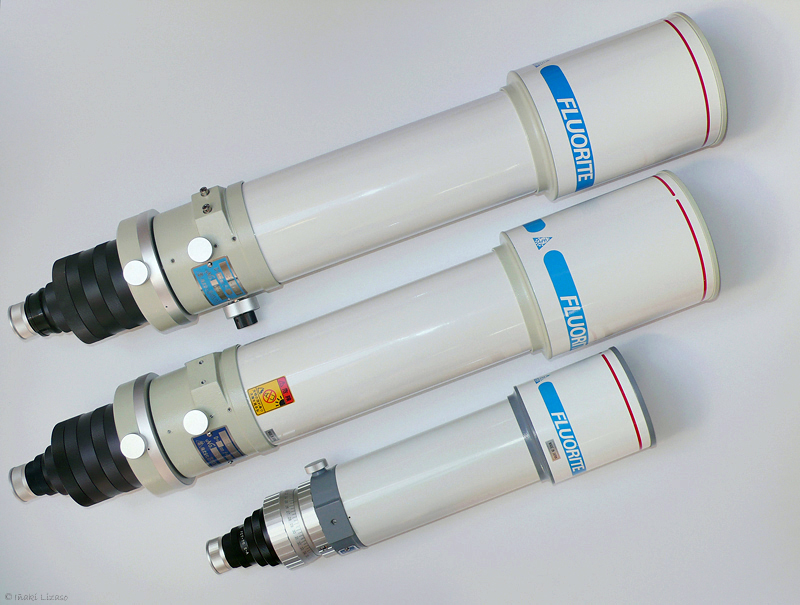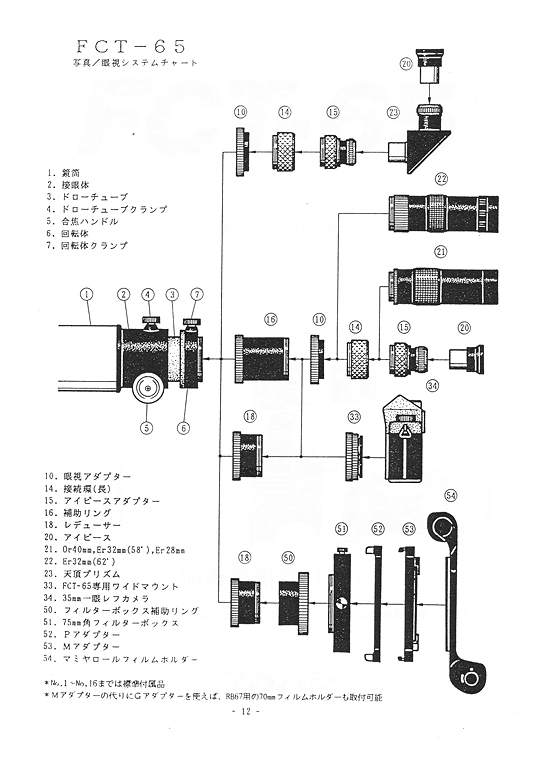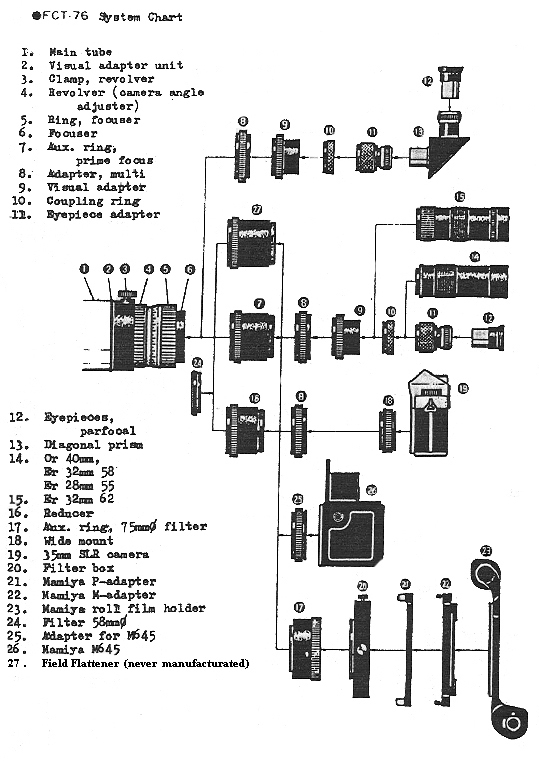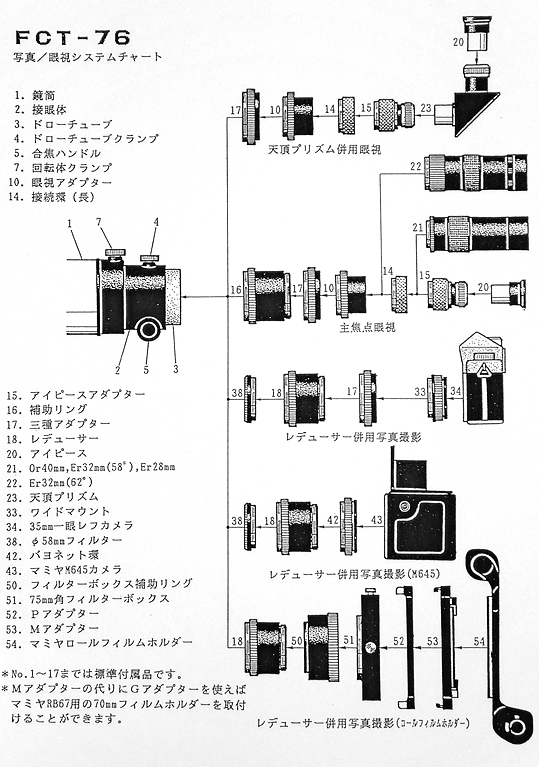|
Recommended telescope as
astrophotograph by Takahashi
Written by: Kenichiro Hata (optical designer)
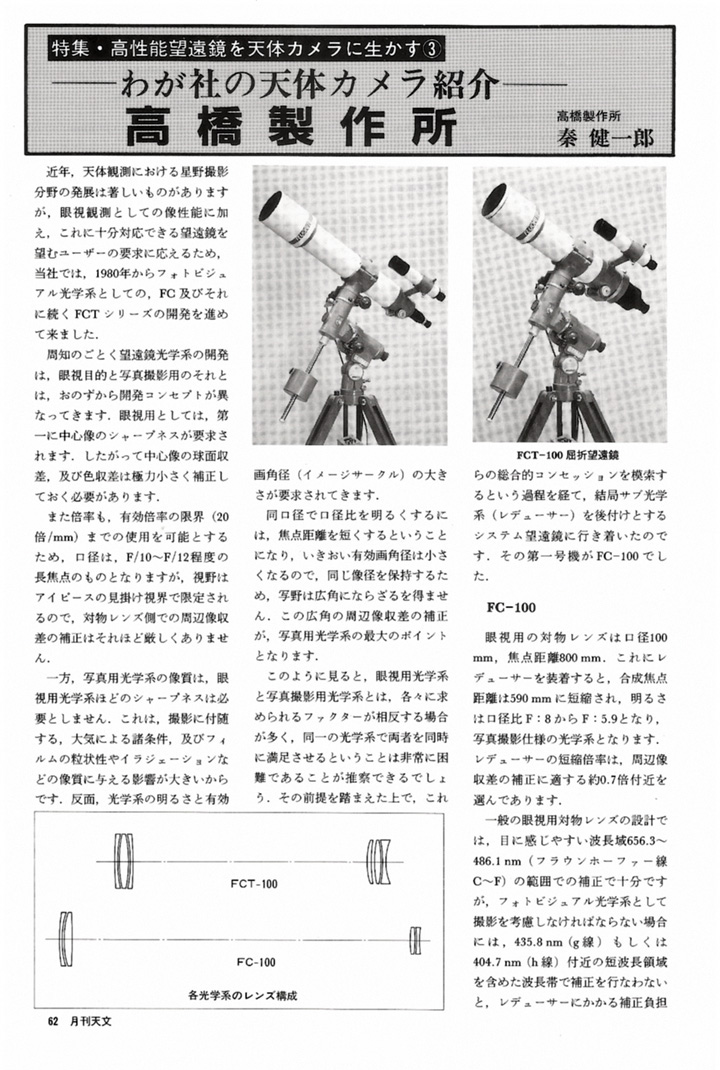 
Recently in astrophotography, we've seen great high
growth of technical achievements. That made us to
develop FC telescopes from 1980 and next to FCT as
photo-visual telescopes. As many knows, it’s a
design compromise if which should be based on a
photograph or visual use.
In case of visual use, we should minimize the
spherical and color aberrations for sharp center
images and should set focal ratio F10 to F12 for
magnify up to 20 times for large objective diameters
as effective limit. In this case, we are allowed to
narrow field correction because of the eyepiece
field.
Another case of photograph, we needs not so severe
correction of center images, because of the film
grain or air streams which affects the image
quality. Small focal ratio and short focus length
for short exposures time forces the telescope as
wide angle lens. As for the border zone of the
photograph, we must optimize the another
aberrations.
This conflict of alternative demand, after it was
discussed by fumbling hard, finally we conclude a
design as a system telescopes with sub-optics by
reducer. FC-100 was the first telescope of this
concept.
FC-100
We set a objective diameter 100mm and focal length
to 800mm for visual use and the reducer would
decrease focal length to 590mm. Then F ratio will be
smaller, from F8 to F5.9 for utilize as astro-camera.
About reduction ratio of reducer, we optimized as
0.7X. It’s said in visual use based on the human
sensitivity that we should design the ray trace of
wavelengths from 656.3nm to 486.1nm for adequate
correction. However for astro-camera, we should
design for wider bandwidth to 435.8nm g-line or even
wider of 404.7nm h-line. For the balance of the
objective and reducer, we should design the
objective to minimize the color correction error,
not for force the excessive power load to reducer.
Therefor, we select the doublet objective using
Fluorite crystal instead of the classical KzFS.
Fluorite has wide range of ray transparency from 125
nm to 10 µm, nearly to the ultra-violet rays. This
will be useful for the astrophotography. Reducer is
mainly used for correction of field curvature and
coma.
fig-1 shows the spot diagram of the FC-100 with
reducer, calculated mixing each 250 of d, C, F,
G-line. D-line is the standard line and used as the
best focus point. Angle 0 degree, 2.5 degree and 5
degree i.e. height of 0, 12.9mm and 25.8mm.
FCT-100
FCT series, it's an upgrading of FC concept, should
take advanced level of point spread function, is
what we intended. The objective of FCT consist in a
Fluorite triplet, eliminating the 2nd order
spherical aberration and the color aberration to
making a compact short tube with improved the visual
use in sharpness and high-contrast. The center image
at the best focus field, mixed 4 different
wavelengths, will be 30% smaller than FC. In fact,
you can easily be aware of it. Optional reducer for
astrophotography consists of gorgeous three
elements, which yields 458.7mm of focal length and
F4.6. Wide field of 8 degrees angle, is 1.6 time
wider than FC-100.
fig-2 shows spherical aberration with eye for the
FC-100.
fig-3 shows spot diagram of the FCT-100 with
reducer. Angle 0 degree, 4degree and 8 degree i.e.
height of 0, 16mm and 32mm with mixed ray of d, C,
F, g .
fig-4 shows spherical aberration with eye for the
FCT-100.
fig-5 shows vignetting image of the peripheral zone
of the FC-100 and FCT-100, both with reducer.
FCT-100 is gathering more light, of 13% up.
Document source and
translation by Mr. Hiromu Goto. |





